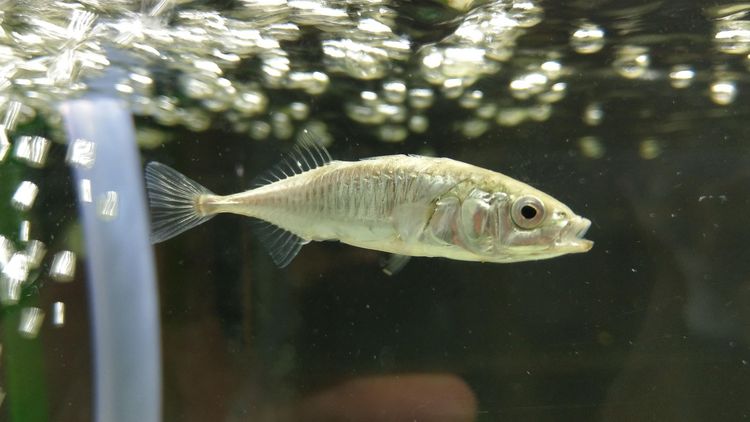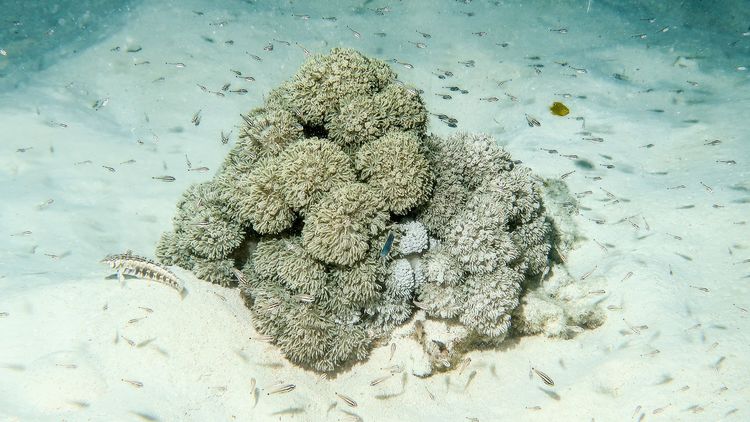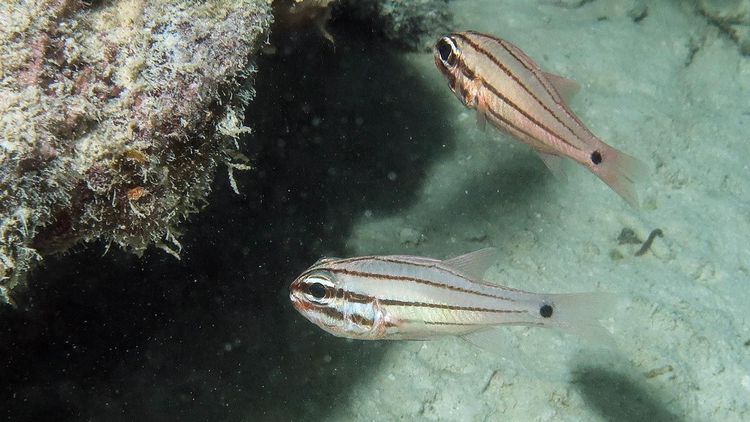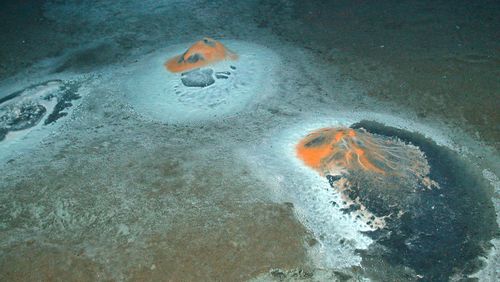Fish migrations generally take place hidden from view. Researchers from the Magnetoreception Collaborative Research Centre at the University of Oldenburg are investigating how herring, sticklebacks and coral fish find their way in the sea.
The three-spined stickleback has long been a popular research object. These small fish offer biologists starting points for studies on a range of subjects, from evolution and mating behaviour to population genetics and physiology. But there is one aspect of the stickleback's life about which very little is known: how these fish, typically just three to four centimetres long, navigate the seas. "Here in the North Sea, sticklebacks migrate to rivers such as the Weser and the Ems to spawn in spring," says Prof. Dr. Gabriele Gerlach. It seems almost miraculous that they are able to locate the mouths of these rivers in this vast, rather unvaried marine environment.
In the Collaborative Research Centre Magnetoreception and Navigation in Vertebrates, which is led by Oldenburg neurobiologist Prof. Dr. Henrik Mouritsen, Gerlach is investigating whether being able to detect and use the Earth's magnetic field for orientation is among their navigation methods. One major challenge for the fish expert and her team is that the migratory movements of most species of fish are very difficult to track – partly because GPS transmitters don't work underwater.
From the Kieler Förde to the Öresund
This means that Gerlach and her team, which includes biologists Dr Lisa Spiecker, Malien Laurien and Wiebke Dammann, are limited to studying species whose migration routes are at least roughly known to scientists. "If we know in which direction the fish want to migrate, we can use experiments to find out which stimuli they use for orientation," she explains. In addition to sticklebacks from the North Sea, the researchers are currently studying herring larvae from the Kieler Fjord, whose destination is known to be the Öresund, the strait that runs between the Danish island of Zealand and the Swedish province of Skåne.
"We put the fish out in the open in transparent plastic bowls about the size of a cake cover, fixed side by side on a rack, and then film them," explains Gerlach. The recordings are then used to determine which direction the fish want to swim in. To test to what extent the magnetic field plays a role in helping the fish to orientate themselves, the researchers create an artificial field rotated to an angle of 90 degrees relative to the Earth's magnetic field, for example. "If the sticklebacks change direction when we rotate the field, we can conclude that they perceive magnetic stimuli," Gerlach explains.
Larvae with a magnetic compass
Using a similar experimental setup in 2016, Gerlach, Mouritsen and their colleagues found strong evidence that cardinalfish have an internal magnetic compass. Thousands of these small fish, which are common in Australia's Great Barrier Reef, are flushed up to 50 kilometres out into the open ocean when they are still larvae. After a few weeks the survivors find their way back to the reef – and surprisingly often to the exact place where they were born. In an article published in science magazine Current Biology, the team reported back then that in the first phase of migration the fish presumably use not only the Earth's magnetic field but also the position of the sun and the stars to roughly determine which direction to head in.
"In the case of herring we have already proven that they use the sun to orient themselves," Gerlach reports. In addition to their experiments with the rotated magnetic field, the researchers are also conducting behavioural experiments.
Are tiny iron crystals acting as compass needles?
Exactly how this suspected magnetic sense, known as magnetoreception, might function is another subject of the group's research. The scientists are pursuing two theories. The first is that the fish's magnetic sensor is a light-sensitive protein in the eye. Thanks to the research results of Mouritsen's group it is now considered highly likely that birds use this mechanism. Genetic studies by Gerlach's team have shown that a number of fish species have their own variant of this protein. Oldenburg physicist Prof. Dr. Ilia Solov'yov is now using model calculations to determine whether this protein possesses the properties to act as a magnetic sensor.
The second theory on magnetoreception is based on the premise that there are certain cells in some animals that contain tiny crystals of the mineral magnetite, which align themselves in a north-south direction like compass needles. When these crystals rotate, certain fibres may register this as a mechanical stimulus, in the same way one might detect a pressure stimulus. A few years ago, the Oldenburg biogeophysicist Prof. Dr. Michael Winklhofer, who was working for the Ludwig-Maximilians-Universität Munich at the time, demonstrated that such magnetite crystals are present in nerve cells in the nose of salmon and trout – and that there are many indications that these crystals are involved in magnetoreception. Winklhofer is currently investigating whether this sensory channel is also present in sticklebacks and herring.
Even if fish migrations will probably remain largely hidden to us humans for some time to come, it is becoming increasingly clear – also thanks to the research at Oldenburg – that these creatures are excellent at orienting themselves in the vastness of the oceans. "It used to be thought that larvae, in particular, were randomly distributed by the currents," says Gerlach. "But we are increasingly observing that the paths the fish take are not random. They know exactly where they want to go."
This article first appeared in the current issue of the university newspaper UNI INFO (in German).






